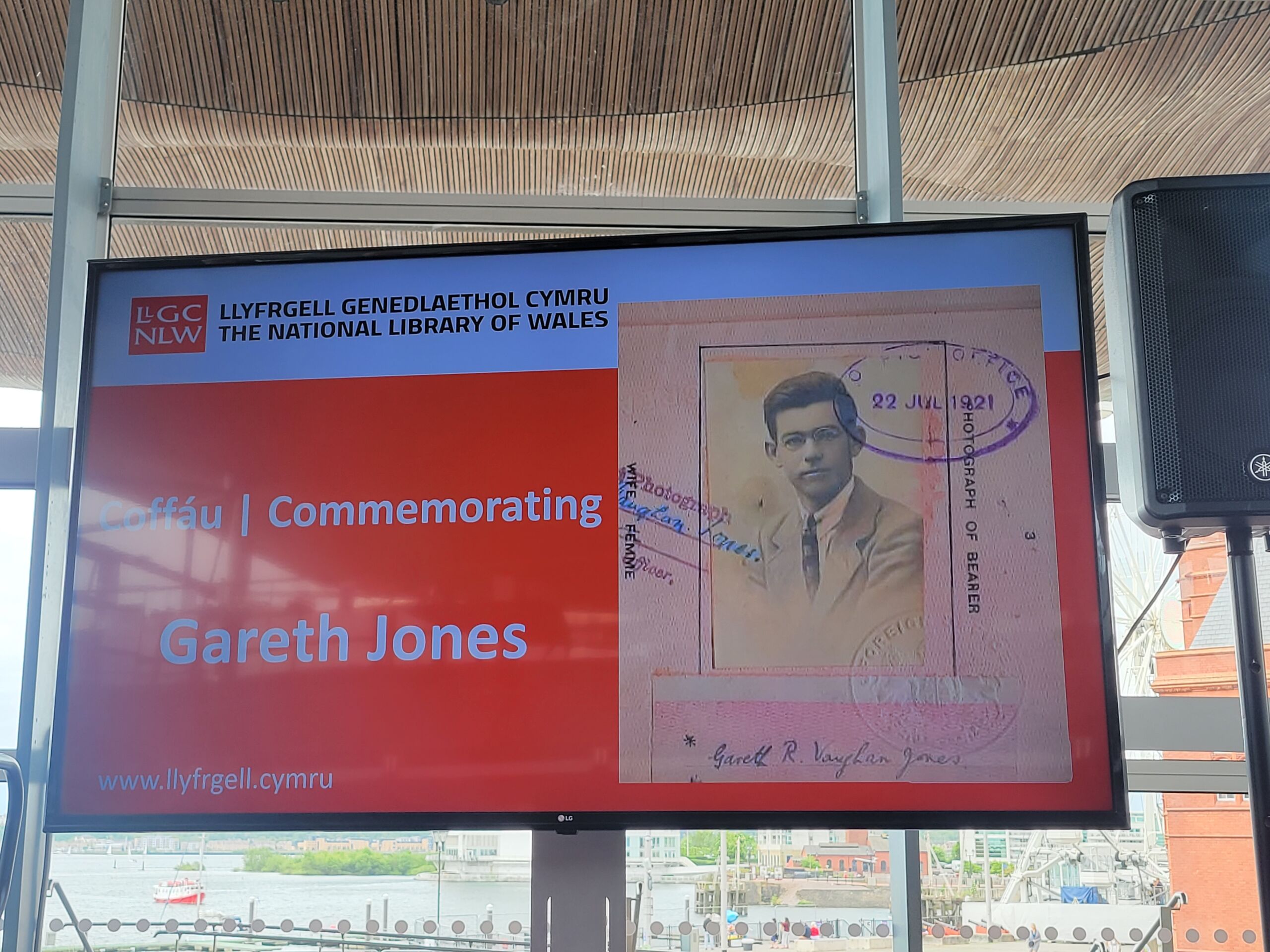The UNWLA remains steadfast in its commitment to be a vehicle of awareness about the genocide of Ukrainians of 1932-1933, known as the Holodomor. An attempt by Joseph Stalin to force Ukrainian farmers into collective farms grew into massive man-created famine when Soviet soldiers were ordered to raid houses and take every crumb of food away. Villages and cities died of hunger, while the West was unaware of this tragedy. The reporters such as Walter Duranty simply spun the Soviet narrative and denied that massive death even happened. The more important were (and still are) the voices of truth. Gareth Jones was the Welsh journalist who accurately reported the Holodomor and kept the diaries while reporting on Ukraine. The Gareth Jones papers were discovered years after his death, and the UNWLA was the primary sponsor of the digitization.
Gareth Vaughan Jones (1905–1935) was a gifted researcher, journalist, and author who in March 1933 first reported in the Western world, without vagueness and under his own name, the existence of the Soviet famine of 1932–1933. During his freelance career he traveled the world, and by 1930 was submitting articles to a variety of newspapers and journals. After being banned from re-entering the Soviet Union, Jones was kidnapped and murdered in 1935 while investigating in Mongolia.
This was a significant accomplishment that ensures that the general public has access to the truth and horrors of the Holodomor, and the memory of it will never be forgotten. Now the digital collection of his documents is available on the website of the National Library of Wales. Students, researchers and the general public to decipher and learn first-hand about the reality of the Holodomor.
The archives include the famous ‘Hitler diary’ kept by Gareth during his visit to Germany in the spring of 1933 and describe conditions and various events in Nazi Germany shortly after the Fuehrer had come to power there and presents uncannily perceptive pen-portraits of Hitler himself and Goebbels.
A further group of six pocket diaries describes in some detail Gareth’s visits to the Soviet Union between 1931 and 1933, especially his travels there, the people whom he meets, and graphic accounts of the conditions of the Holodomor, which Gareth Jones almost alone reported in British newspapers and journals at the time. Gareth Jones’s diaries, perhaps represent the only independent verification of arguably Stalin’s greatest atrocity. Digitization of the diaries ensures that the general public has access to the truth and horrors of the Holodomor.
This May, the National Library of Wales celebrates the completion of the digitization of this collection. Our Officer-at-large Oksana Lodziuk Krywulych attended the event representing our organization as the primary sponsor of this project. “The UNWLA is honored to be a sponsor of the digitization of Gareth Jones diaries, she says. “The Ukrainian nation owes a debt of gratitude to Gareth Jones, a great man, who was not afraid to accurately report on the horrors of the Holodomor. He deserves to be honored and remembered for documenting the truth when it was denied by many in the West. His reporting is especially telling today as Ukraine is once again suffering genocide at the hands of the same perpetrator, while the world watches in real-time.”

Left to right: Rob Phillips, Head of Archives at the National Library of Wales in Aberystwyth, Oksana Lodziuk, UNWLA, Professor Lubomyr Luciuk, Professor at the Royal Military College of Canada, representing the Ukrainian Canadian Civil Liberties Foundation

The final resting place of Gareth Jones, killed in Mongolia and buried at the Merthyr Dyfan cemetery. Photo: Oksana Lodziuk












